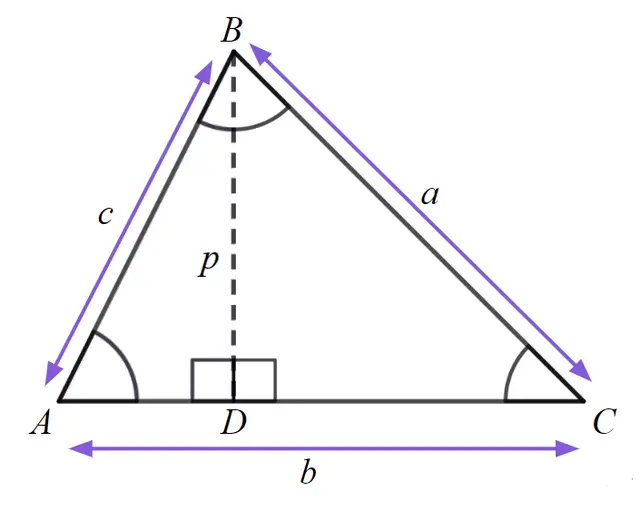Myths about teaching can hold you back


- Year 11•
- Higher


- Year 11•
- Higher
The sine rule
I can derive and use the formula for the sine rule.
These resources will be removed by end of Summer Term 2025.
Switch to our new teaching resources now - designed by teachers and leading subject experts, and tested in classrooms.
These resources were created for remote use during the pandemic and are not designed for classroom teaching.
Lesson details
Key learning points
- The sides of a triangle are proportional to the sines of their opposite angles
- A diagram can aid with understanding this
- The sine rule is useful when you know an angle and side pair and wish to find another pair
- In order to do this, you will need either a side length or an angle
Keywords
Sine rule - The sine rule is a formula used for calculating either an unknown side length or the size of an unknown angle.
Common misconception
Pupils may be uncertain about which angle pairs with which side.
The angle is paired with the side length that is opposite.
To help you plan your year 11 maths lesson on: The sine rule, download all teaching resources for free and adapt to suit your pupils' needs...
To help you plan your year 11 maths lesson on: The sine rule, download all teaching resources for free and adapt to suit your pupils' needs.
The starter quiz will activate and check your pupils' prior knowledge, with versions available both with and without answers in PDF format.
We use learning cycles to break down learning into key concepts or ideas linked to the learning outcome. Each learning cycle features explanations with checks for understanding and practice tasks with feedback. All of this is found in our slide decks, ready for you to download and edit. The practice tasks are also available as printable worksheets and some lessons have additional materials with extra material you might need for teaching the lesson.
The assessment exit quiz will test your pupils' understanding of the key learning points.
Our video is a tool for planning, showing how other teachers might teach the lesson, offering helpful tips, modelled explanations and inspiration for your own delivery in the classroom. Plus, you can set it as homework or revision for pupils and keep their learning on track by sharing an online pupil version of this lesson.
Explore more key stage 4 maths lessons from the Non right-angled trigonometry unit, dive into the full secondary maths curriculum, or learn more about lesson planning.

Licence
Prior knowledge starter quiz
6 Questions
Q1.Which of the following are equivalent to $$\sin(\theta°)=\frac{\text{opp}}{\text{hyp}}$$?
Q2.Using $$\sin(A)=\frac{p}{c}$$, identify all the rearrangements.

Q3.Using $$\sin(C)=\frac{p}{a}$$, identify all the rearrangements.

Q4.An isosceles triangle has lengths 10 cm, 10 cm and 16 cm. The area of the isosceles triangle is cm$$^2$$.
Q5.An equilateral triangle has lengths of 10 cm. The area of the triangle, to 1 decimal place, is cm$$^2$$.
Q6.A regular hexagon has lengths of 6 cm. The area of the hexagon, to the nearest integer, is cm$$^2$$.
Assessment exit quiz
6 Questions
Q1.When do we use the sine sule?
Q2.Identify the correct ways to express $$p$$ using the diagram.

Q3.Which of the following are correct versions of the sine rule?
Q4.Length $$a$$ is opposite angle A. Work out the size of length $$a$$ giving your answer to 2 decimal places.

Q5.Length $$b$$ is opposite angle B. Work out the size of length $$b$$ giving your answer to 2 decimal places.

Q6.Work out the size of angle $$\alpha$$ giving your answer to 1 decimal place.


